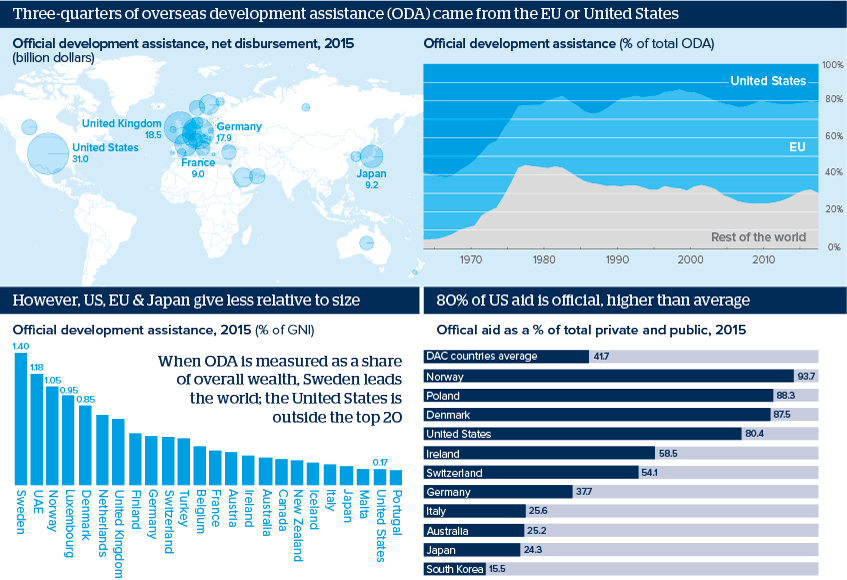Official aid is under pressure; private aid is growing
Large US budget cuts risk squeezing public foreign aid, but more private co-funding may fill some of the gap
Source: OECD International Development Statistics
Outlook
The US draft budget for 2018 cuts overseas aid by about one-third and proposes to focus assistance on international organisations that ‘advance US foreign policy interests’ and countries of ‘greatest strategic importance’.
However, congressional approval is required. The plans may be watered down, with development agencies and programmes undergoing limited adjustments to budgets, instruments and priorities. Some of the cuts may be offset by accelerating the shift from aid to development finance, using public funds to leverage commercial funds for development.
Indeed, if the World Bank’s ‘cascade’ approach of facilitating more private investment in frontier economies is replicated by regional development banks, the development finance landscape will be transformed.
Impacts
- Developing countries now receive nearly one-third more foreign business investment than foreign aid, even some of the lowest income states.
- UK and US development agencies may be restructured with a greater emphasis on economic development and trade priorities.
- A worry is that the focus on achieving a return from development finance alters donor priorities, distorting funds from humanitarian aid.
- Authoritarian regimes will increasingly use counterterrorism efforts to attract more Western funding.
